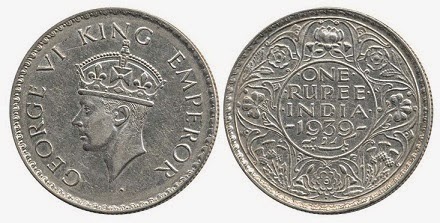Yaudheyas Bahudhankye Type Bronze Coin
INDIA, YAUDHEYA: Bahudhanake type bronze coin.
Ancient Coins - INDIA, YAUDHEYA: Bahudhanake type bronze coin. Zoom view.
Yaudheya Republic, c. 1st century BC
Bahudhanake type, Class 2
AE unit (20 mm, 3.56 g)
Ancient Coins - INDIA, YAUDHEYA: Bahudhanake type bronze coin. Zoom view.
Yaudheya Republic, c. 1st century BC
Bahudhanake type, Class 2
AE unit (20 mm, 3.56 g)
Obverse: Bull standing right with yupa (sacrificial post) to right, with Brahmi legend Yaudheyanam Bahudhanake around
Reverse: Elephant standing right with trunk raised.
Reverse: Elephant standing right with trunk raised.
Ref: Pieper 1110; Devendra Handa, Tribal Coins of Ancient India, plates XL-XLI
The Bahudhanake type coins are listed by Handa as Class 2.
The Yaudheyas were a powerful native Vedic Dynasty in north India, who were famous for their martial skills and captured the native parts of their region from foreign rulers. This specimen is nicely struck on a full flan. Scarce coin. They are known to exist in the early times from Vedic scriptures [Mahirshi Yudhajit, Samvidhan Brahmin, Samaveda (1.2), Shloka 1.4] [1]. However, history recognizes them as a tribe who were militants against the local Indo-Greek rule? Completely unimaginable! They emerged as Republic as early as in 5th Century B.C. The Yaudheyas Republic was conquered later by Samudragupta in the 4th Century A.D. and was amalgamated into Gupta Empire.
The Yaudheyas covered the region between Indus River and the Ganges (Called Bahudhanakya) with their capital city Khokarakot (Present day Rohtak). Early Yaudheya coins were additionally found in East Punjab, and North Rajasthan, and Western Uttar Pradesh. They also governed Garhwal, Kumaon, and Himachal Pradesh, in their later military campaigns [2]. Yaudheya coins have been excavated as far as Bahawalpur in Pakistan.
In the Mahabharata, the land Bahudhanyaka is stated to be among the countries subjugated by Nakula, the fourth Pandava in his conquest. Bahudhanyaka was the first to fall in Nakulas in of the western direction toward Sakastan, which agrees with the Rohtak-Hisar area [3]. Varahamihira in his Brihatsamhita (XIV.28 and XVI.22) placed them in the northern division of India.
References
[1]. Samveda. ibid.
[2]. Saklani, Dinesh Prasad (1998). Ancient Communities of the Himalaya. Indus Publishing.
[3]. Bharadwaj, O. P. (1986). Studies in the Historical Geography of Ancient India. Sundeep Prakashan.



